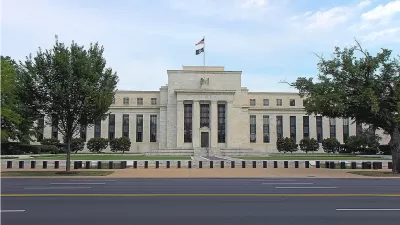Heard of food deserts? Some neighborhoods are banking deserts, where credit unions are the only reputable financial service providers. Now, these community institutions are getting easier access to federal recognition.

If you're tired of Chase or Citibank branches as ubiquitous as Starbucks, don't be. In some low-income communities, banks are few and far between. Unless they want to take their chances with payday lenders and the like, credit unions can be residents' only option.
Often, Oscar Perry Abello writes, "In neighborhoods that other institutions largely neglect, religious congregations cobble resources together to provide access to child care, education, healthcare, workforce development and even financial services." Credit unions can be one of those services.
In an uncertain federal climate, entities like the National Credit Union Administration (NCUA) and the U.S. Treasury's CDFI Fund are still making it easier for credit unions serving low-income populations to get certified. As community development financial institutions (CDFIs), credit unions can better support small business lending. The CDFI ecosystem also includes banks, venture funds, and loan funds, which often back affordable housing.
Abello writes, "The CDFI Fund's grant programs can often support for hiring new staff or training staff to expand product offerings. Public sector support is often the only way such credit unions can finance expanded product offerings."
FULL STORY: Credit Unions Get Streamlined Path to More Neighborhood Investment

Maui's Vacation Rental Debate Turns Ugly
Verbal attacks, misinformation campaigns and fistfights plague a high-stakes debate to convert thousands of vacation rentals into long-term housing.

Planetizen Federal Action Tracker
A weekly monitor of how Trump’s orders and actions are impacting planners and planning in America.

In Urban Planning, AI Prompting Could be the New Design Thinking
Creativity has long been key to great urban design. What if we see AI as our new creative partner?

King County Supportive Housing Program Offers Hope for Unhoused Residents
The county is taking a ‘Housing First’ approach that prioritizes getting people into housing, then offering wraparound supportive services.

Researchers Use AI to Get Clearer Picture of US Housing
Analysts are using artificial intelligence to supercharge their research by allowing them to comb through data faster. Though these AI tools can be error prone, they save time and housing researchers are optimistic about the future.

Making Shared Micromobility More Inclusive
Cities and shared mobility system operators can do more to include people with disabilities in planning and operations, per a new report.
Urban Design for Planners 1: Software Tools
This six-course series explores essential urban design concepts using open source software and equips planners with the tools they need to participate fully in the urban design process.
Planning for Universal Design
Learn the tools for implementing Universal Design in planning regulations.
planning NEXT
Appalachian Highlands Housing Partners
Mpact (founded as Rail~Volution)
City of Camden Redevelopment Agency
City of Astoria
City of Portland
City of Laramie





























